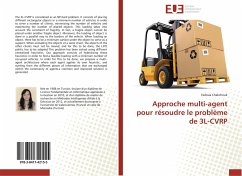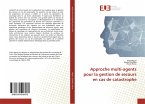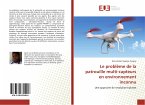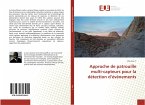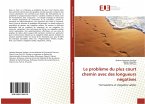The 3L-CVRP is considered as an NP-hard problem. It consists of placing di erent rectangular objects in a minimum number of vehicles in order to serve a number of clients, minimizing the number of vehicles and maximizing the number of placed objects. This loading takes into account the constraint of fragility. In fact, a fragile object cannot be placed under another fragile object. Moreover, the loading of object is done in a parallel way to the borders of the vehicle. When loading an object, there has to be a minimum surface under the object to serve as a support. When unloading the objects of a same client, the objects of the other clients must not be moved, and for this to be done, the LIFO politic has to be adapted This problem has been solved using di erent centralized heuristics. Our approach consists of hybridizing these heuristics in order to nd a feasible loading with a minimum number of occupied vehicles. In order for this to be done, we propose a multi-agent architecture where each agent applies its own heuristic, and starting from the di erent pieces of information that are exchanged within the community of agents,a common and improved solution is generatedThe 3L-CVRP is considered as an NP-hard problem. It consists of placing di erent rectangular objects in a minimum number of vehicles in order to serve a number of clients, minimizing the number of vehicles and maximizing the number of placed objects. This loading takes into account the constraint of fragility. In fact, a fragile object cannot be placed under another fragile object. Moreover, the loading of object is done in a parallel way to the borders of the vehicle. When loading an object, there has to be a minimum surface under the object to serve as a support. When unloading the objects of a same client, the objects of the other clients must not be moved, and for this to be done, the LIFO politic has to be adapted This problem has been solved using di erent centralized heuristics. Our approach consists of hybridizing these heuristics in order to find a feasible loading with a minimum number of occupied vehicles. In order for this to be done, we propose a multi-agent architecture where each agent applies its own heuristic, and starting from the di erent pieces of information that are exchanged within the community of agents,a common and improved solution is generated

